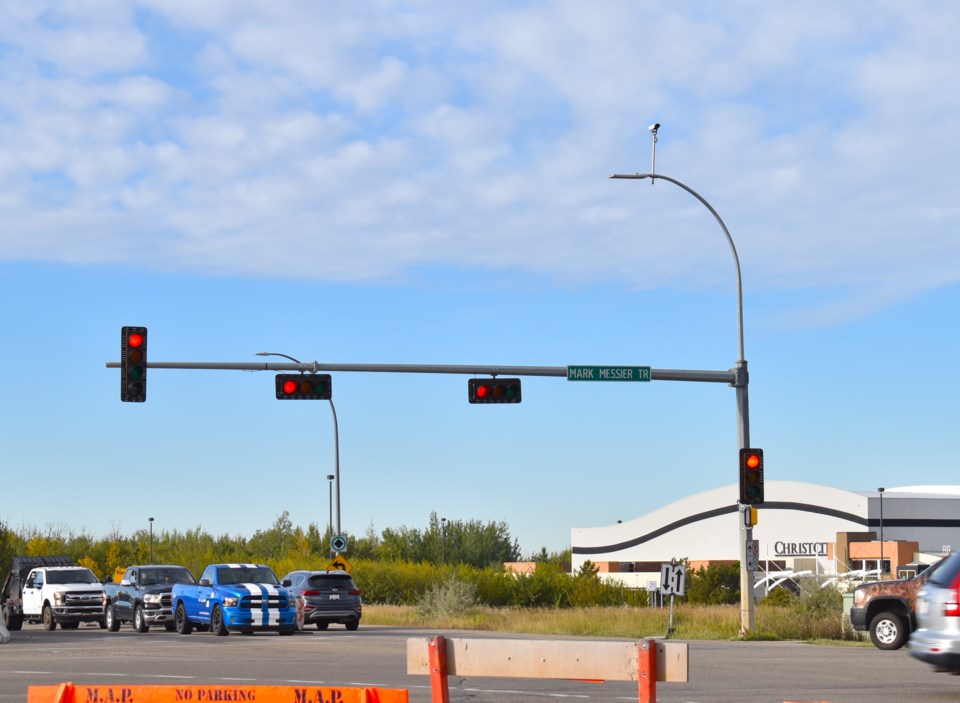Hockey Hall of Famer Mark Messier and early St. Albert settler Louis Campbell both knew how to get there first.
So, too, do the motorists who pass through the intersection of the roads that now bear their names.
There is an Intersection Safety Device (ISD) overlooking Mark Messier Trail and Campbell Road, just east of the Anthony Henday and it is one of the busiest for issuing tickets in Edmonton, according to recently updated data.
In June, July and August of this year, the cameras capturing northbound and southbound traffic through the intersection issued 6,832 speeding and 174 red light violation tickets.
With Gateway Boulevard at 34 Avenue and 170 Street at 118 Avenue, it is in the holy trinity of auto tickets in Edmonton.
Other busy intersections that issued nearly 1,000 speeding tickets per month over the busy summer driving season include 50 Street at Ellerslie Road, Rossdale Road at 97 Avenue, and 97 Street at 122 Avenue.
The rugged MestaFUSION ISD built by Idemia was selected for its ability to withstand extreme weather and accurately capture Alberta’s non-reflective licence plates. It was installed at Messier and Campbell because of a “higher frequency” of collisions there, according to the Automated Traffic Enforcement Location Assessment filed with the provincial government by Edmonton police.
In the last three years, the intersection has seen at least 15 collisions that caused property damage or an injury, at least five of them fatal.
According to a 2021 study, across Edmonton 0.013 per cent of vehicles received a red light running ticket and 0.058 per cent of vehicles received a speeding violation ticket. Still, Edmonton says it has data that proves photo radar and red light cameras together make the roads safer.
“Automated enforcement, including Mobile Photo Enforcement (MPE) and Intersection Safety Devices (ISDs) is a proven countermeasure for increasing traffic safety,” reads the City of Edmonton’s 2021 Automated Traffic Enforcement Report. “The presence of MPE increases perceived risk of detection, and therefore general deterrence.”
It employs an “optimization tool” to decide how often photo radar vehicles are dispatched to monitor problem locations, which are singled out according to provincial guidelines.
The tool works to “maximize the safety impact” of enforcement by considering:
- The frequency and severity of collisions;
- The frequency and severity of vulnerable road user collisions;
- Speed compliance rates;
- The number of speed complaints filed by residents at each site; and
- Historical violation rates.
In 2023, those yellow trucks “monitored” more than 10.5 million vehicles over 56,203 hours at 422 sites. That was up more than two million vehicles from 2022 but down almost two million from 2019.
On Dec. 1, 2023, the province moved to curb photo radar in cities, vowing to remove “fishing holes” where the primary motivation for monitoring traffic is generating ticket revenue.
It banned new photo radar on Anthony Henday Drive and other ring roads, and launched a review of other "fishing holes." Intersection devices were left out of the review because they have been proven to reduce serious injury collisions such as T-bones.




